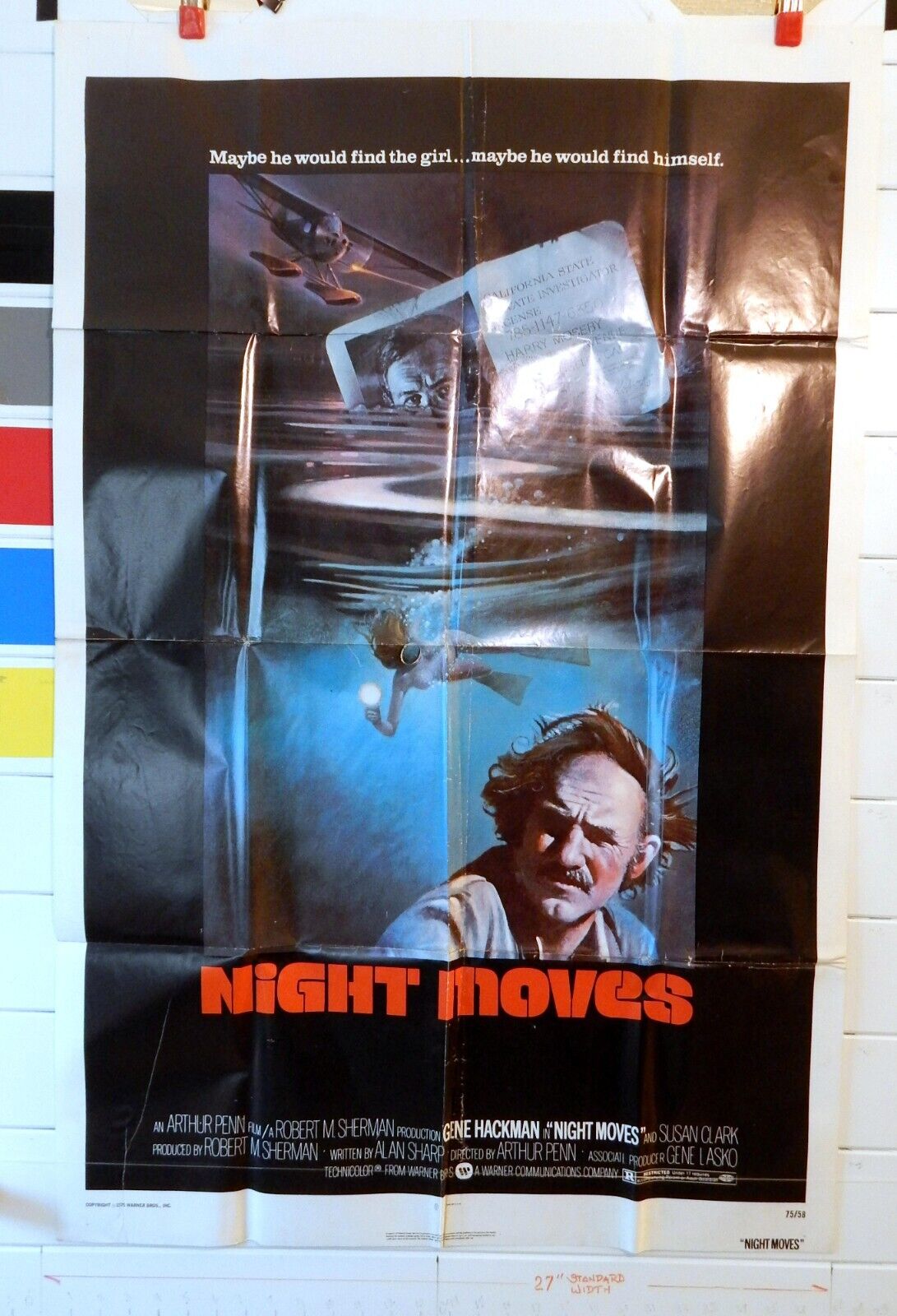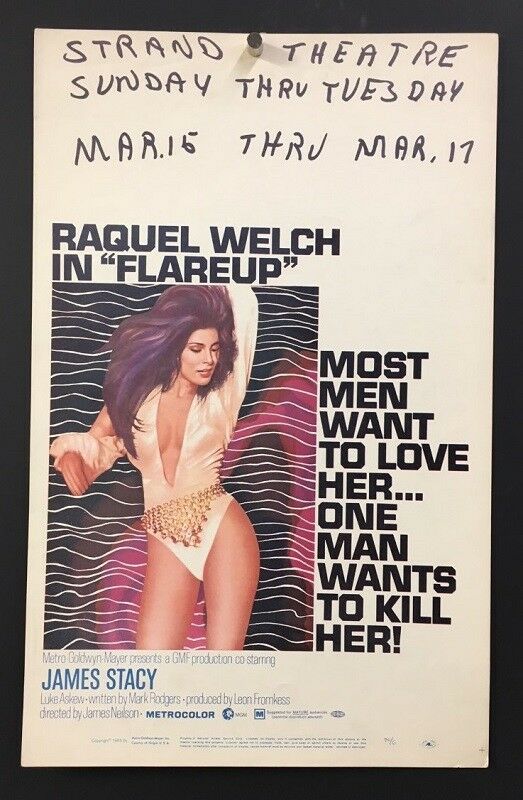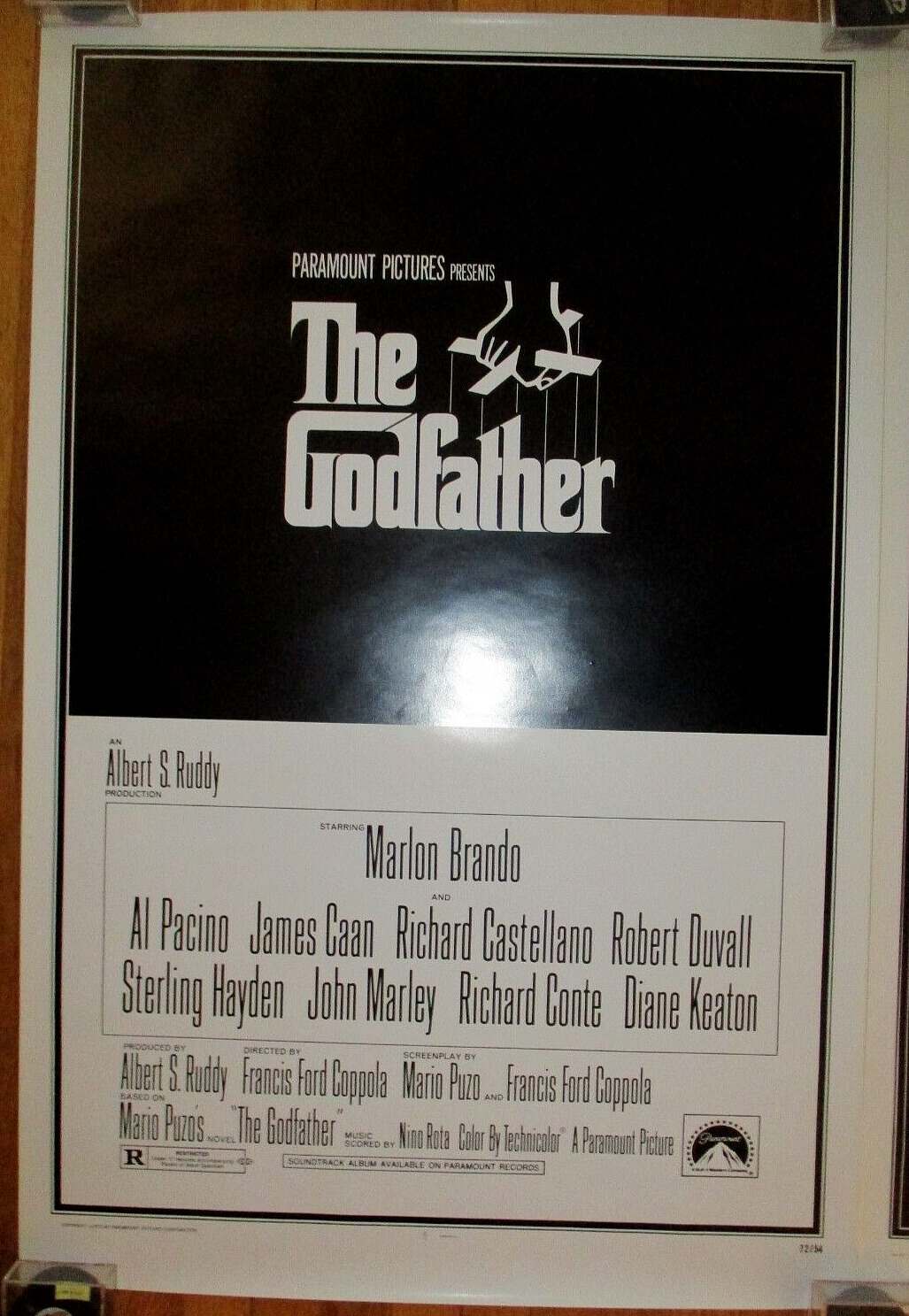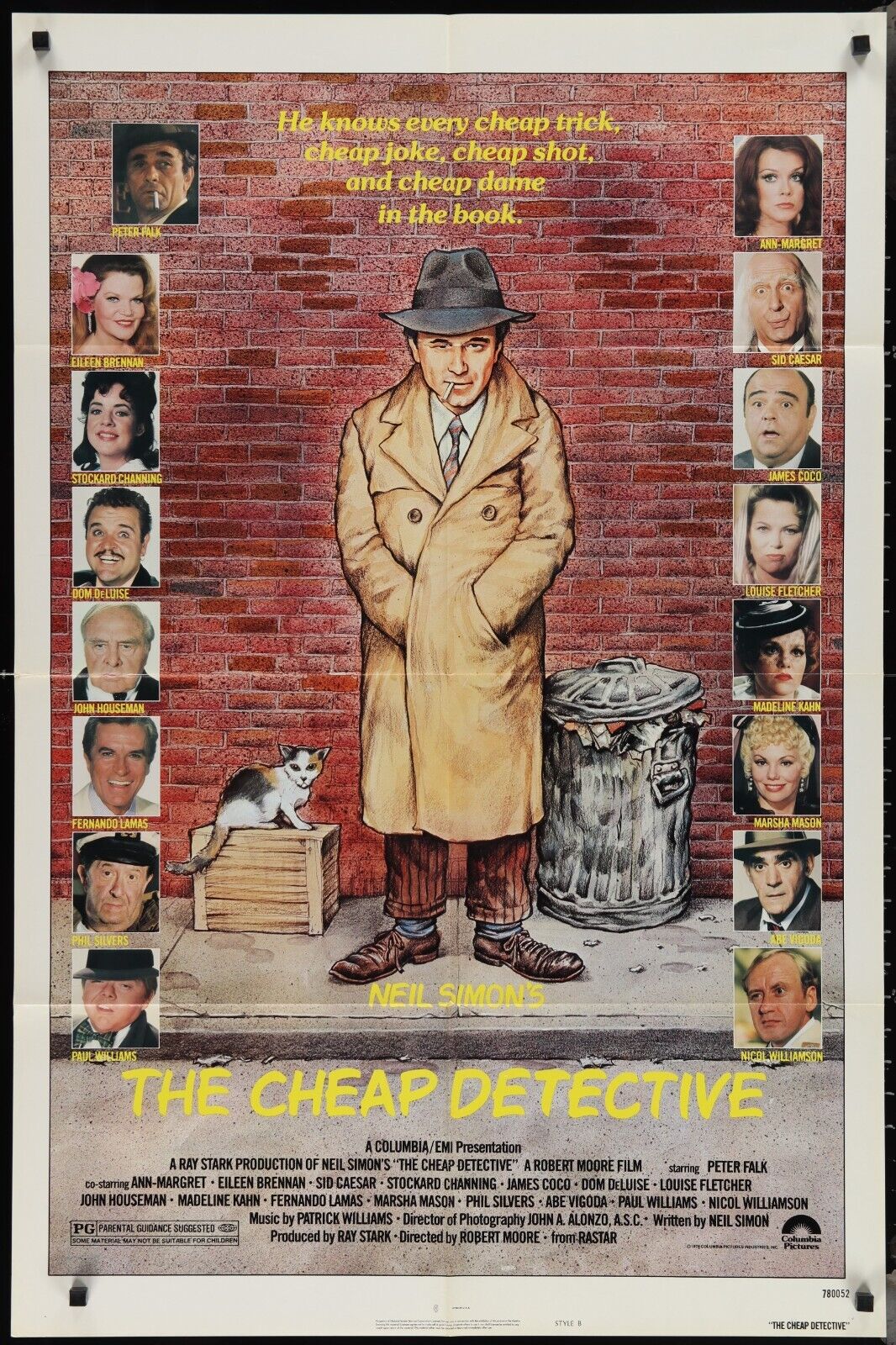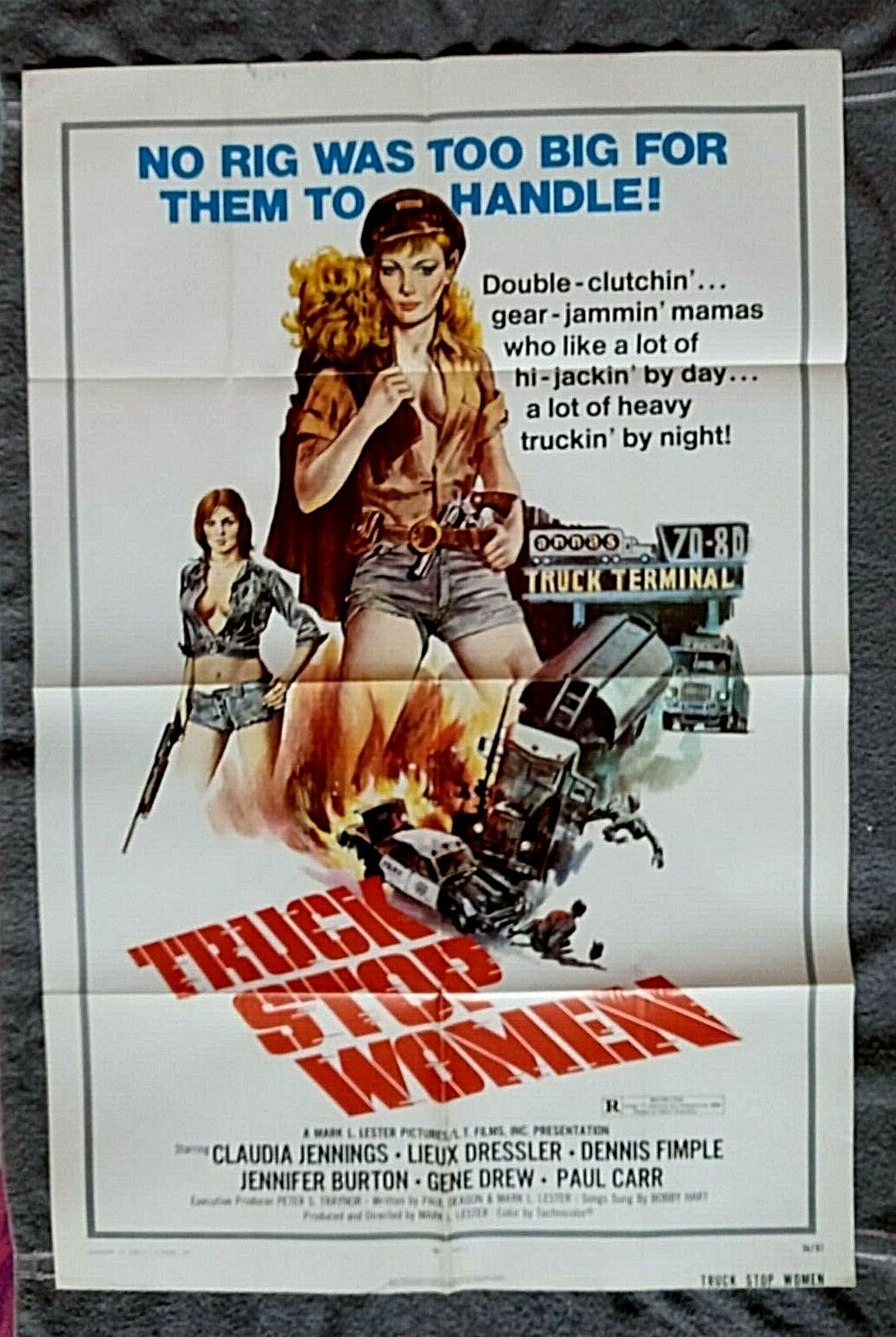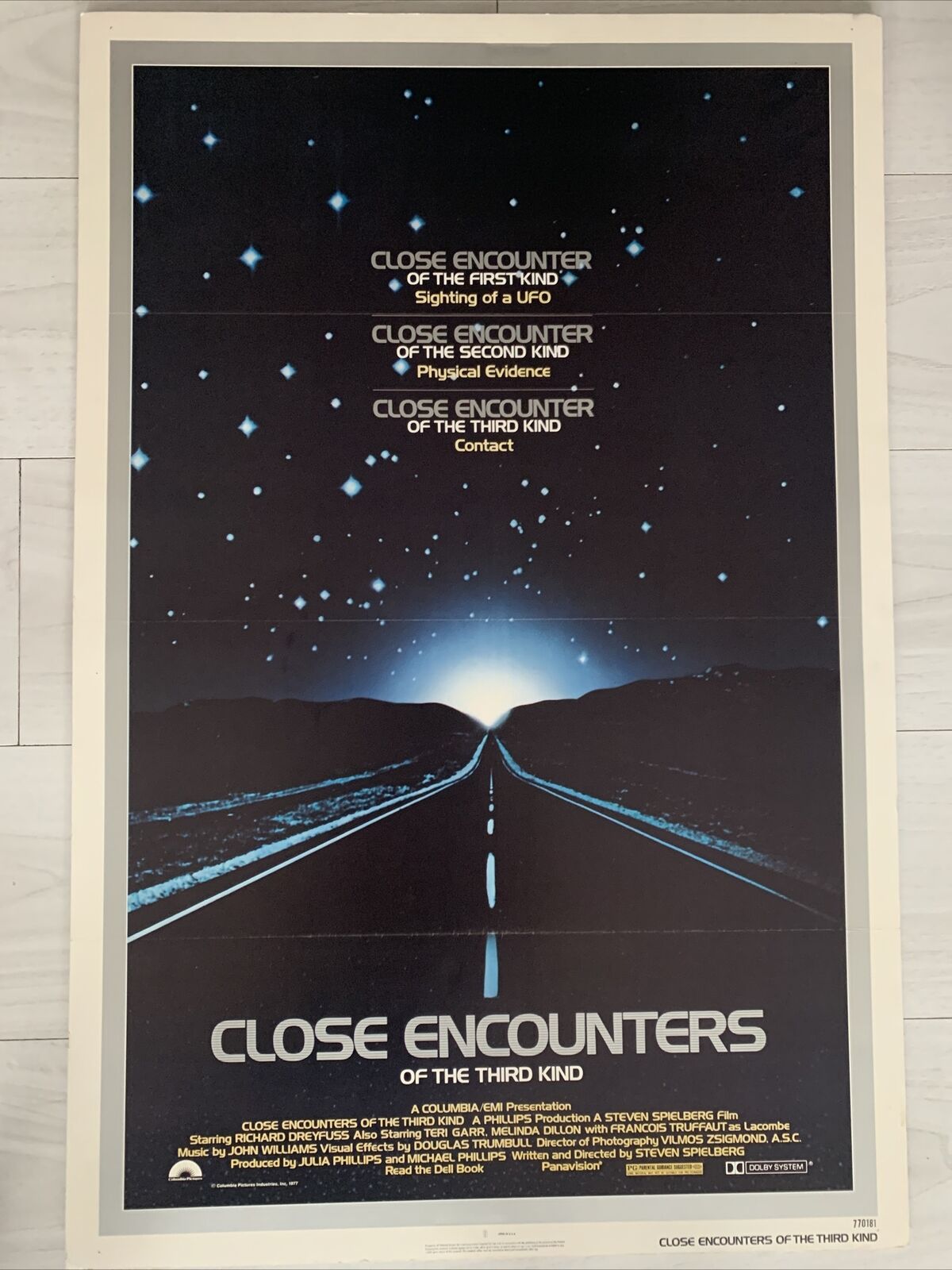-40%
Night Moves movie poster starring Gene Hackman NSS 75/58
$ 31.67
- Description
- Size Guide
Description
Night Movesstarring Gene Hackman
NSS 75/58
This poster is in good condition.
The poster is solid and the edges are clean. It could use
some retouching with watercolor pencil. The paper is a slightly lighter stock than normal.
Please closely examine all photos and ask any questions prior to making a bid or offer.
I ship using Priority or Ground Advantage Mail. Most one-sheet posters
from this era were already folded before distribution to theatres.
These folded posters are boxed 15” x 12” x 3” or in a USPS Medium
flat rate 14” x 12” x 3.5” box. This minimizes stress on creases and folds, and also
allows for multiple posters in a standard box. If you buy multiple posters and
they fit in the same box, you only pay shipping on the first poster - all other
shipping charges will be backed out. Buy four or more posters costing or more
that ship in the same box and shipping within the continental U.S. is free.
Currently, I try to have all auctions start and end on Fridays at 9 PM Eastern, 6 PM West Coast time,
however that is not fixed or a guarantee and may change in the future.
Bidders who have won and paid before Monday morning will have posters shipped Monday, except
on postal holidays, when shipment will be Tuesday. If ALL bidders in a week pay Friday night,
I can sometimes get posters boxed and to the post office, which closes before noon on Saturdays.
Bidders who pay on Monday or later will have packages shipped Thursday or Friday.
Bidders who go beyond the eBay time limit will have the sale canceled and the item
will be relisted. If there has been no communication, that bidder will drop off my sales list.
I sometimes send additional items with a purchase at no charge. Those are subject
to availability and other factors, some of which I have no control over.
The posters I sell are authentic period “one-sheets,” averaging 40” tall and 27”
wide, that were displayed in theaters. Some posters may vary in size slightly.
I do not use stock photos! The actual poster for your consideration is shown
in the primary photo,
along with a group of standard color swatches
to the left of it, including pure black, white, and a neutral gray swatch.
This helps determine true color and size. Photos may also include close-up
photos of NSS numbers, distinguishing features, and any damage or defects.
Many posters have a sheen, which shows up in my photos. The posters
are held onto the display board to photograph with two clamps and, when
required, a nylon fishline near the bottom of the poster. I do not attempt to
flatten them perfectly flat, to minimize the flexing and any further
weakening of the paper and image.
Almost all of these posters are from my personal collection, gathered over
many years. I began working in movie theatres and collecting in 1969.
Some of the posters come from drive-ins, some from theatres that were
closing forever, some were in projection booths and storerooms covered in
dust. The fortunate ones have spent most of their time in my storage,
protected from damage. Others only exist because I rescued them from
silverfish and mold and the garbage tip. Those unabashedly show the
scars of their history.
Please do not expect a pristine newly printed poster
or one that sat in a warehouse untouched.
Poster condition* description key:
Near Mint
- very close to “as received” at a theatre from the film distributor.
Excellent
- nice condition with good storage, but has some expected
scuffs, wear, and minor issues that should not distract when displayed.
Very Good
- some imperfections, noticeable when displayed. Often has
archival tape on the back to staunch minor tears or holes.
Good
- major imperfections, noticeable and distracting (possibly
correctable), but poster is structurally functional, often with the help of
archival tape on the back and/or basic repairs.
Fair
- major problems. May be in pieces or have significant stains or fading,
insect, mold, or water damage. Best for use in collages or decoupage.
*condition. Much more needs to be said on this, the rating is only a guide.
1. Not all posters are created equal. The paper stock and printing vary.
If the paper or printing is unusual, I try to note that in the description.
2. Hard folds (creases) are common. National Screen Service used a machine
that folded posters in half, then in half again, with a hard (creased) fold to
reduce them from 40” tall to 10” tall for shipping and storage. Those folds
weaken both the paper and the ink, often creating a distracting white
substrate paper line across a dark image. We did sometimes receive
posters in that were rolled and not hard folded, but that was very rare.
3. Soft folds: When posters came off the film truck, they were typically
folded across the width. Some storage folded one more time, sometimes
creased, allowing posters to be held in (fire resistant) file cabinets.
If held like that, nine weak points were created at the fold intersections.
4. Inventory writing. Posters that did not have the printed NSS code for
year and film release were often labeled by hand in pen or marker in the
lower right corner or back, but it could be anywhere.
5. Re-use of the back of the poster. When no poster arrived for a film, a
staff member or assistant usually grabbed a poster, flipped it over, and
used a magic marker to scrawl the name of the upcoming film on the back.
In many cases, this see-through destroyed the original poster. I may sell
a poster that has see-through, but it will have a condition warning
at the top of the description. Although resale value may not be there,
starting collectors and those with retouching skills may still want them
because of the reduced price.
6. Stains. Poster box changes occurred late at night and were done by
tired people. Coffee stains and cola stains got on posters. Some foxing
is common in older posters.
7. Tape. Some poster display cases wouldn't hold posters properly.
Scotch tape was the common remedy, usually just in the white border area.
Staple holes were less common and typically from display in a break room.
Discolored tape residue or removal that tears the paper happens.
8. Paper decay over time. Acid in paper and lignens cause it to become
brittle and fragile over time. Excess handling is to be discouraged. An old
poster that arrives intact may split at the folds within a few times unfolding
and re-folding it.
These posters are, on average, forty to fifty years old. When I examine a
poster for sale, I try to address the easily correctable problems. I use an
archival paper tape on the back of posters to correct and stabilize tears,
and I may even put squares of it on the weak fold points of thin or weak
posters pro-actively, to keep them from breaking open.
If I see distracting white lines at folds during inspection, or stress marks, I
may do a basic correction. Rest assured, these are techniques that were
regularly used in the theatres. Black areas (only) may have a black marker
used to cover the exposed substrate paper. Damaged colored areas are
corrected with watercolor pigment pencil that can be easily removed in the
process of archival mounting or restoration. If it can be done safely, I
remove any tape. Often the tape residue cannot be removed in basic
restoration without damaging the poster, so it may be covered over to keep
the sticky residue encased to prevent further damage.
Sometimes the corners of a border are so covered with tape, or torn, or
even missing, that I will remove the damaged unprinted corner border and
sister in a replacement corner of a similar type of poster stock.
Insect and rodent damage may be addressed different ways. It commonly
occurs on one or more hard folds, sometime creating small holes or perforations
that I back with archival tape. Large holes may have a backing paper that
is colored to match the missing area of the image. Such large holes are
noted in the poster description.
If a poster is particularly valuable and in good shape, I will do the very
minimum to stabilize it, recognizing that further conservation and mounting
may be in its future.
“Dry” restoration of a poster is fairly benign. With the exception of
blackening fold lines, most of it is easily reversible. If a poster is not going
to be permanently mounted, or is being held as an investment to be sold at
a later time, this is all I do and all I would recommend. “Wet” restoration and
mounting or linen backing should always be considered permanent,
even if it is technically reversible.
